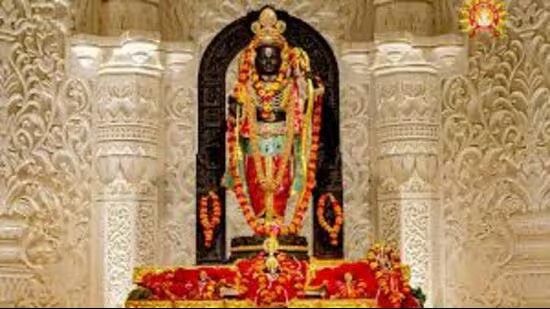Context
Ram Temple inauguration scheduled to take place on January 22,2024.
About
- The Shri Ram Janmabhoomi Temple in Ayodhya is all set to be inaugurated in the presence of Prime Minister Narendra Modi and other dignitaries on January 22.
- Followed by the consecration ceremony (pran pratishtha) of Ram Lalla in the sanctum-sanctorum (garbha-griha), the temple will be open for the devotees from January 24.
- The resurrection of the Ram Temple in 2024 can be compared only with the resurrection of the Somnath temple in the 1950s.
About Ram mandir
- The original design for Ram Mandir was planned in 1988 by the Sompura family of Ahmedabad. However, it went through certain changes in 2020, in reference to the Vastu shastra and the Shilpa shastras.
- The Sompuras have contributed to the design of over 100 temples worldwide for at least 15 generations, including the Somnath temple.
- The Shri Ram Janmabhoomi Temple construction is managed wholly by the Shri Ram Janmabhoomi Teerth Kshetra Trust.
Nagara style of temple architecture
- It is a popular form in northern India, characterized by its tall, pyramidal towers called shikharas.
- The garbhagriha is always located directly under the tallest tower.
- Another unique characteristic is that it does not usually have elaborate boundary walls or gateways.
- The Amalaka or Kalash which is installed on Shikhara is another characteristic feature of this form of temple style.
- There are many subdivisions of Nagara temples depending on the shape of the shikhara.
Temple Architectural:
- Style: The Ram Mandir in Ayodhya is designed in traditional Nagara architectural style.
- The temples are built with stone or brick on a square or rectangular plane with shikhara located in the center.
- The Mandir has a length (east-west) of 380 feet, a width of 250 feet, and a height of 161 feet.
- The Mandir is three-storied, with each floor being 20 feet tall.
Granite Stone used:
- Foundation built with 14-metre-thick layer of roller-compacted concrete, giving it appearance of artificial rock.
- 21-foot-high granite plinth to protect against ground moisture.
No iron has been used anywhere
In this architectural style, the temple is surrounded by small towers called Mukha Mandapa.
Shri Ram Darbar on the first floor.
- Emphasis on environmental and water conservation, with 70% of the 70-acre area being left green
FIVE mandaps (halls):
- Nritya Mandap
- Rang Mandap
- Sabha Mandap
- Prarthana Mandap
- Kirtan Mandap
Deities:
- Idol of ram lalla in sanctum sanctorum.
- Mandirs at four corners of compound dedicated to Surya, Bhagwati, Ganesh, Shiv.
- Statues of deities on pillars and walls.
- On northern and southern arms, temples to Annapurna and Hanuman respectively.
- Temples to Maharshis Valmiki, Vashishtha, Vishwamitra, Agastya, Nishad Raj, Shabri, etc proposed in the complex.

